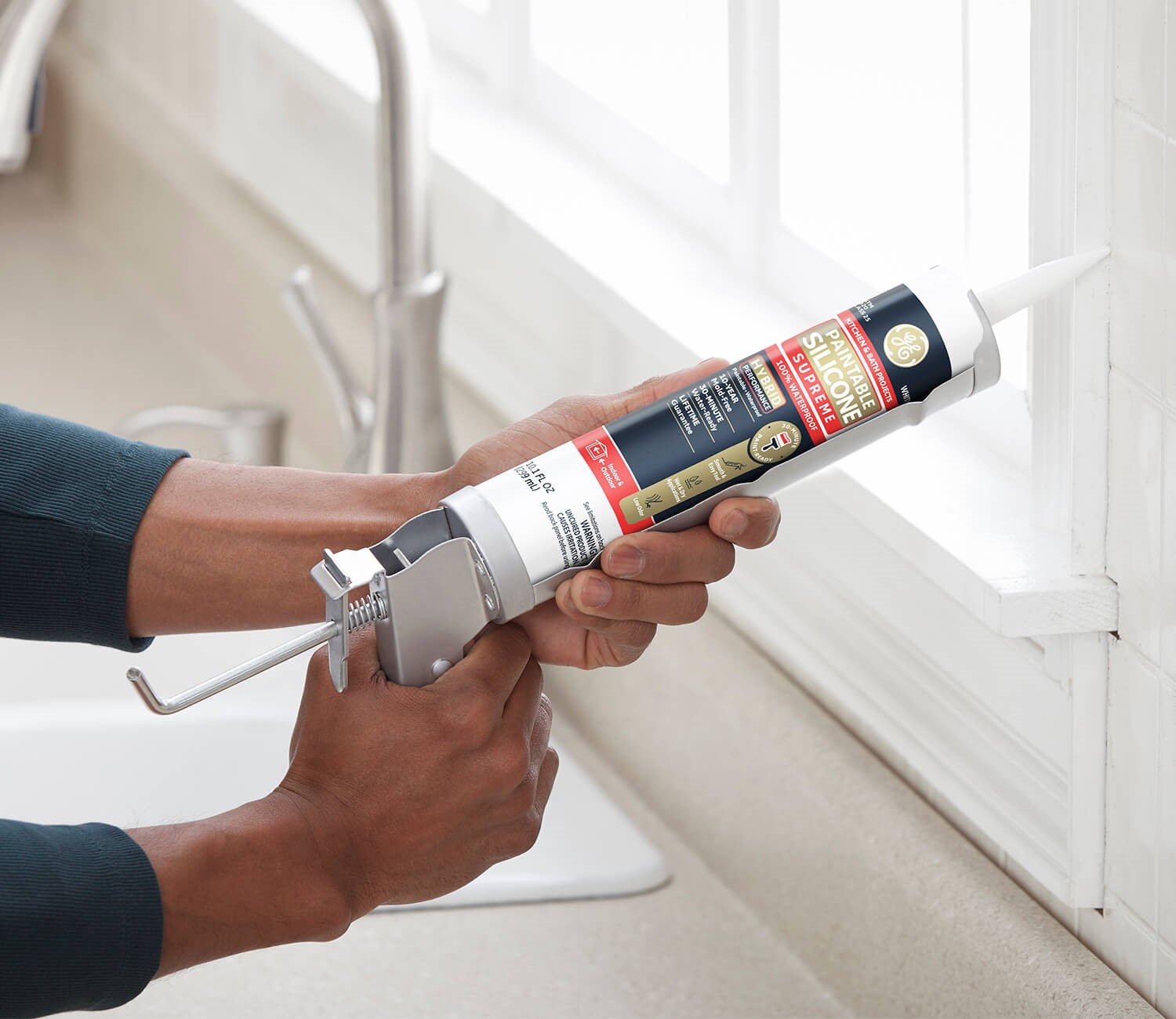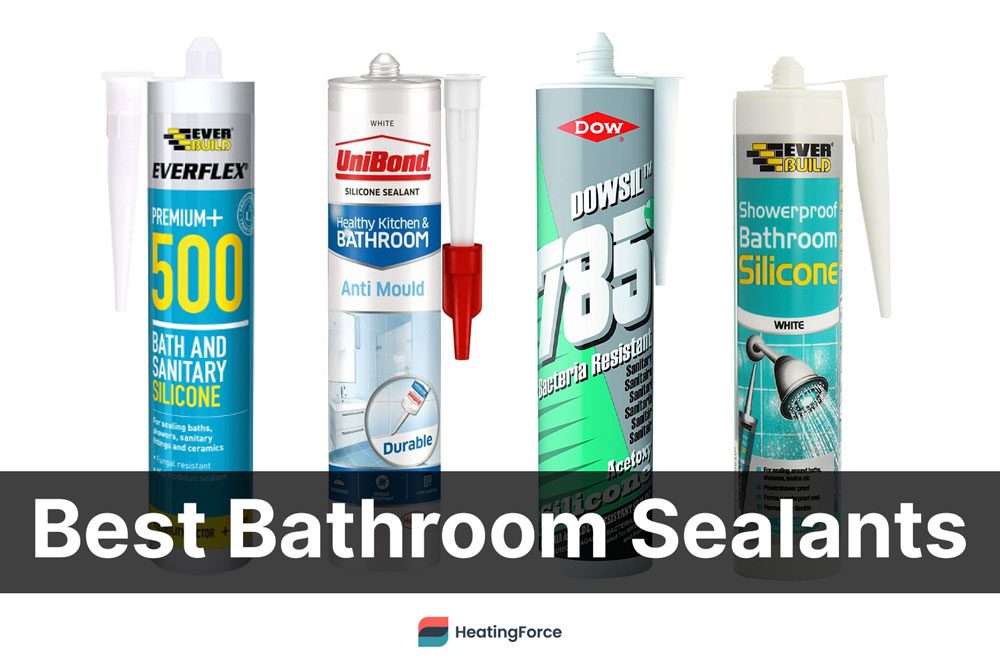Types of Bathroom Sealants

Bathroom sealant is a vital component of any bathroom renovation, helping to prevent water damage and create a clean, hygienic space. Choosing the right type of sealant for your specific needs can be confusing, as there are various options available, each with its unique properties. Let’s delve into the most common types of bathroom sealants and their characteristics.
Silicone Sealants
Silicone sealants are the most popular choice for bathroom applications due to their versatility, durability, and water resistance. They are formulated from a polymer called polysiloxane, which gives them exceptional flexibility and the ability to withstand extreme temperatures and humidity.
Silicone sealants are available in various colours to match your bathroom decor. They are easy to apply and cure quickly, making them a convenient option for DIY projects.
Silicone sealants are ideal for sealing gaps around tubs, showers, sinks, and countertops. They are also suitable for sealing joints in tile work, preventing water from seeping behind the tiles and causing damage.
Polyurethane Sealants
Polyurethane sealants are known for their exceptional strength and durability. They are formulated from a polymer called polyurethane, which creates a strong, flexible bond that resists cracking and tearing.
Polyurethane sealants are more expensive than silicone sealants but offer superior resistance to chemicals and solvents. They are also highly resistant to mildew and mould growth, making them a suitable option for areas with high moisture levels.
Polyurethane sealants are ideal for sealing large gaps and cracks, such as those around windows and doors. They can also be used to seal joints in concrete and masonry.
Acrylic Sealants
Acrylic sealants are a more affordable option than silicone or polyurethane sealants. They are formulated from a polymer called polyacrylate, which provides a durable, water-resistant seal.
Acrylic sealants are less flexible than silicone or polyurethane sealants, making them unsuitable for areas that experience significant movement or expansion. They are also not as resistant to chemicals or mildew as other sealant types.
Acrylic sealants are suitable for sealing minor gaps and cracks, such as those around baseboards and trim. They are also commonly used for sealing joints in drywall and plaster.
Key Features to Consider: Best Bathroom Sealant On The Market

Choosing the right bathroom sealant is crucial for maintaining a clean and functional bathroom. The right sealant can prevent leaks, mould growth, and even protect your bathroom from water damage.
There are several key features to consider when choosing a bathroom sealant. These features will determine how well the sealant performs and how long it lasts.
Mildew Resistance, Best bathroom sealant on the market
Mildew is a common problem in bathrooms, especially in humid environments. It can grow on sealant, making it look unsightly and potentially causing health problems.
To prevent mildew growth, choose a sealant that is specifically designed for bathrooms and contains mildewcide. These sealants will resist the growth of mildew and keep your bathroom looking its best.
Adhesion Strength
A strong adhesion is essential for a bathroom sealant. The sealant needs to bond securely to the surfaces it is applied to, preventing leaks and water damage.
Look for a sealant that is specifically designed for bathroom surfaces, such as tile, grout, and tubs. These sealants will have a strong adhesion and will be able to withstand the constant exposure to moisture and temperature changes.
Ease of Cleanup
When applying sealant, it is inevitable that some will end up on surfaces you don’t want it on. A sealant that is easy to clean up will make the application process much easier.
Look for a sealant that is water-based or solvent-based. These sealants are typically easier to clean up than silicone-based sealants.
Specific Features for Different Bathroom Areas
Different areas of your bathroom have different requirements for a sealant. For example, a sealant for a shower needs to be able to withstand high levels of moisture and temperature changes.
- Shower: A sealant for a shower should be mildew-resistant, have a strong adhesion, and be able to withstand high temperatures.
- Tub: A sealant for a tub should be mildew-resistant, have a strong adhesion, and be able to withstand constant exposure to water.
- Sink: A sealant for a sink should be mildew-resistant, have a strong adhesion, and be easy to clean up.
Top-Rated Bathroom Sealants

Right, so you’ve got the lowdown on different types of sealant and what to look out for, now let’s get into the nitty-gritty of which ones are actually worth your dosh.
Top-Rated Bathroom Sealants
Here’s the deal, we’ve scoured the web and checked out what the peeps are saying to bring you a rundown of the top-rated bathroom sealants out there. We’ve broken it down for you, so you can see the good, the bad, and the ugly, and pick the one that’s right for your bathroom.
| Sealant Name | Type | Key Features | Pros | Cons |
|---|---|---|---|---|
| SikaFlex Pro 11 FC | Silicone | Flexible, paintable, mould-resistant, good adhesion | Great for high-traffic areas, easy to apply, durable | Can be a bit pricey |
| Dow Corning 732 Silicone Sealant | Silicone | Mould-resistant, paintable, good adhesion | Affordable, widely available, good for general use | Not as flexible as some other options |
| Bostik Clear Silicone Sealant | Silicone | Clear, flexible, mould-resistant, good adhesion | Great for showers and tubs, discreet look, easy to clean | Can be more expensive than some other options |
| Loctite Polyseamseal | Polyurethane | Flexible, paintable, good adhesion, good for movement | Stronger than silicone, good for high-movement areas | Can be more difficult to apply |
| GE Silicone II Kitchen and Bath Sealant | Silicone | Mould-resistant, paintable, good adhesion | Affordable, widely available, good for general use | Not as flexible as some other options |
You can find reviews and comparisons of these sealants on sites like [link to review site] and [link to another review site].
Finding the best bathroom sealant on the market is crucial for a long-lasting, watertight seal. However, even the most durable sealant will eventually need replacing. When that time comes, knowing the best way to remove bathroom silicone is just as important.
A clean removal ensures a smooth surface for the new sealant, preventing leaks and ensuring the best possible results.
Finding the best bathroom sealant on the market is crucial for preventing water damage and maintaining a clean, hygienic environment. While some sealants are marketed as miracle solutions, it’s important to choose a product that’s specifically designed for the unique demands of a bathroom.
For inspiration, take a look at the best bathrooms in Las Vegas , where luxurious fixtures and meticulous design are the norm. These spaces demonstrate the importance of quality materials and proper application, highlighting the value of a good bathroom sealant in achieving a truly stunning and functional bathroom.